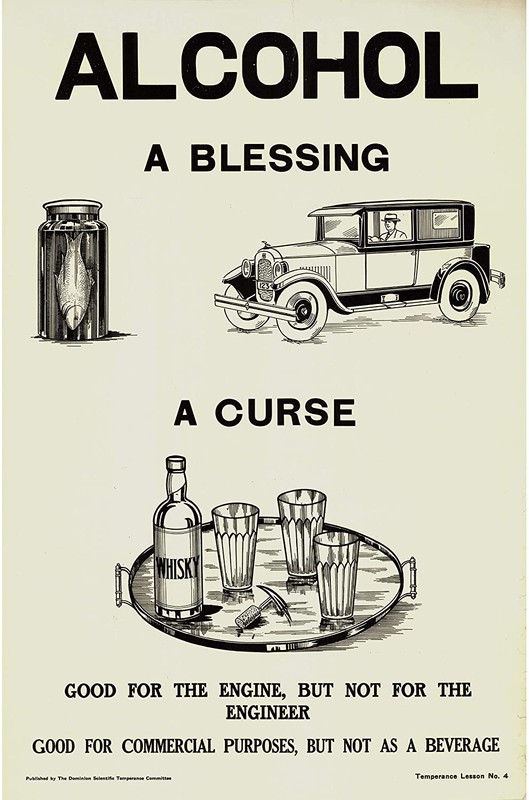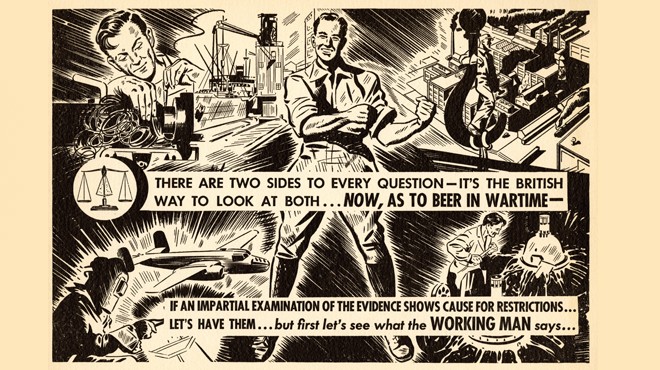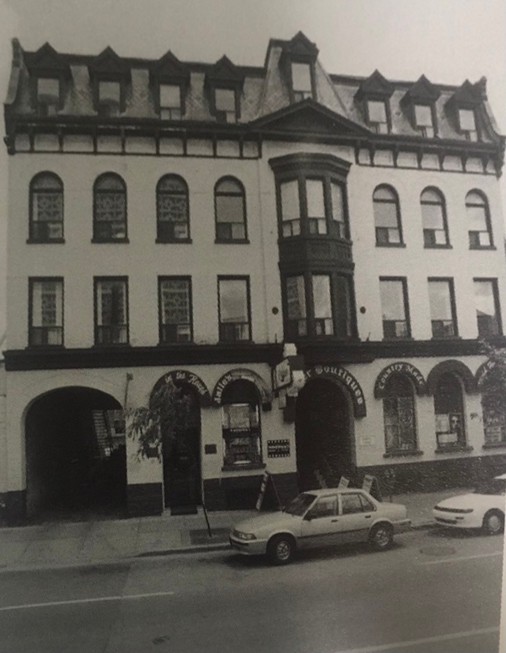The Temperance Movement and Prohibition
Introduction
Text-to-speech Audio
(We suggest you stand across the street from the location)
Welcome to the Fraser House, one of the many meeting locations for Temperance groups in London. This particular location was the meeting place for the Women’s Christian Temperance Union, whose London chapter had been active since the 1870s. There were as many as 11 active temperance lodges in London in the mid to late 1800s, the majority of which met weekly.
Temperance is defined as "moderate self-restraint". In Ontario, for a good portion of the late 19th century, and early 20th, temperance faced off against “King Alcohol”. This movement began as a desire to help maintain familial harmony and decent in the public. It was spearheaded by religious movements and became a well-founded movement in Canada and the United States.
Images
Temperance Poster

Pro-Alcohol Poster 1941

Fraser Hotel
.jpg)
Fraser Mall, Formerly known as Fraser House

Backstory and Context
Author-Uploaded Audio
Listen to a narration of this entry's description by Public History.
Text-to-speech Audio
In the early 1800s, Anglo-Protestants in Canada began to protest the use of alcohol. At first, it was against hard liquor, but by the mid-1800s, it had fully formed into a fight for a “completely dry Canada.” The slippery slope of a sip was exploited fully in an 1848 article by The Canadian Temperance Advocate. It read “By sipping a little wine, beer, or cider, occasionally, our relish for strong drink was formed, and we now know, to our shame and sorrow that in this way our habits of intemperance began.” Drinking was seen as leading to family trouble, blasphemy, or even sudden death. Temperance Movements sprouted up over Ontario. One such movement sprouted up here in London. While it is no longer with us, the Fraser Hotel was a meeting spot for the Woman’s Christian Temperance Union. It was likely not too far from where you are standing right now.
Their movement was still not gaining traction despite their best efforts, but in 1914, war broke out, and this changed everything. The Prohibitionists yanked at the inner-patriotic souls of every Canadian. As one advocate poster implored, “Is the sacrifice made by our soldiers for use on the battlefield to be the only sacrifice? The Bar or the War? That is the question of the hour.” The missionaries claimed that fighting abroad was useless if the Homefront was not willing to forgo some sacrifice. Starting April 27th, 1916, Ontario was dry. Any liquor sold or purchased in a club or bar was illegal, and alcohol was not permitted in public places such as businesses, only homes. The only way to obtain alcohol was for medicinal purposes. Sir Frederick Banting was one of the main men credited with the discovery of insulin as a diabetes treatment. His first patient was a war veteran wishing to celebrate with his friends with a bottle of alcohol. Doctors became bartenders and bartenders became nobodies. While Prohibition may have easily been repealed following the Armistice, it persisted, until 1927, when Ontario ended Prohibition. This is the same time the Liquor Control Board of Ontario was created, or as we know it today: The LCBO.
The Prohibition Laws had led to several violations of other Ontario laws, namely: bootlegging, and illegal border crossings. To start the process of ending Prohibition, Ontario passed laws with significant scrutiny. There would be one shop for beer and wine and the other for liquor. They would have the drinking age be 21, and for an added measure, one had to have a license that was renewable every year but could be removed if poor behavior was found. Nationally, a brief period of normalcy returned.
The advent of World War II featured some desire to return to a “Prohibition State”, but surveys showed that about 6% of people featured a return to the complete blanket ban. As a result, beer makers such as Labatt began promoting the idea that beer and beermaking were necessary for the war effort. It is safe to say they were successful and continued their beer-making.
Sources
Information
“Labatt Historic Collection.” Labatt. Accessed November 4, 2021. https://labattheritage.lib.uwo.ca/closer-look/the-challenge-of-prohibition.
Simner, Marvin. “A Brief History of the Temperance Movement in London and the Surrounding Areas,” 2014. https://ir.lib.uwo.ca/cgi/viewcontent.cgi?article=1151&context=psychologypub.
Images
Temperance Lesson No. 4. Provincial Archives of Alberta. Accessed November 4, 2021. https://www.flickr.com/photos/alberta_archives/22239140161/.
(From the article from labattheritage.lib.uwo.ca)
“Labatt Historic Collection.” Labatt. Accessed November 4, 2021. https://labattheritage.lib.uwo.ca/closer-look/the-challenge-of-prohibition.
Hotel Fraser. Western Archives and Libraries, n.d. Accessed November 4, 2021.
https://www.flickr.com/photos/alberta_archives/22239140161/.
https://labattheritage.lib.uwo.ca/closer-look/the-challenge-of-prohibition
Western Archives and Libraries
Downtown London: Layers of Time by Michael Baker
